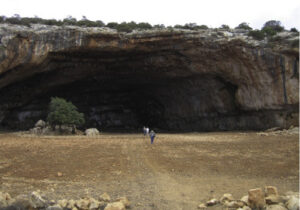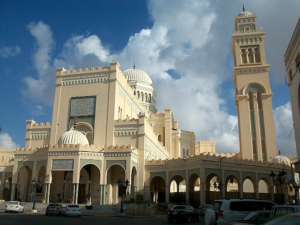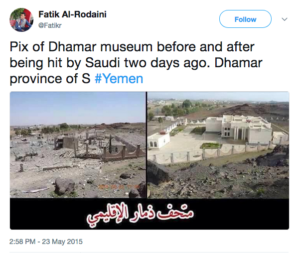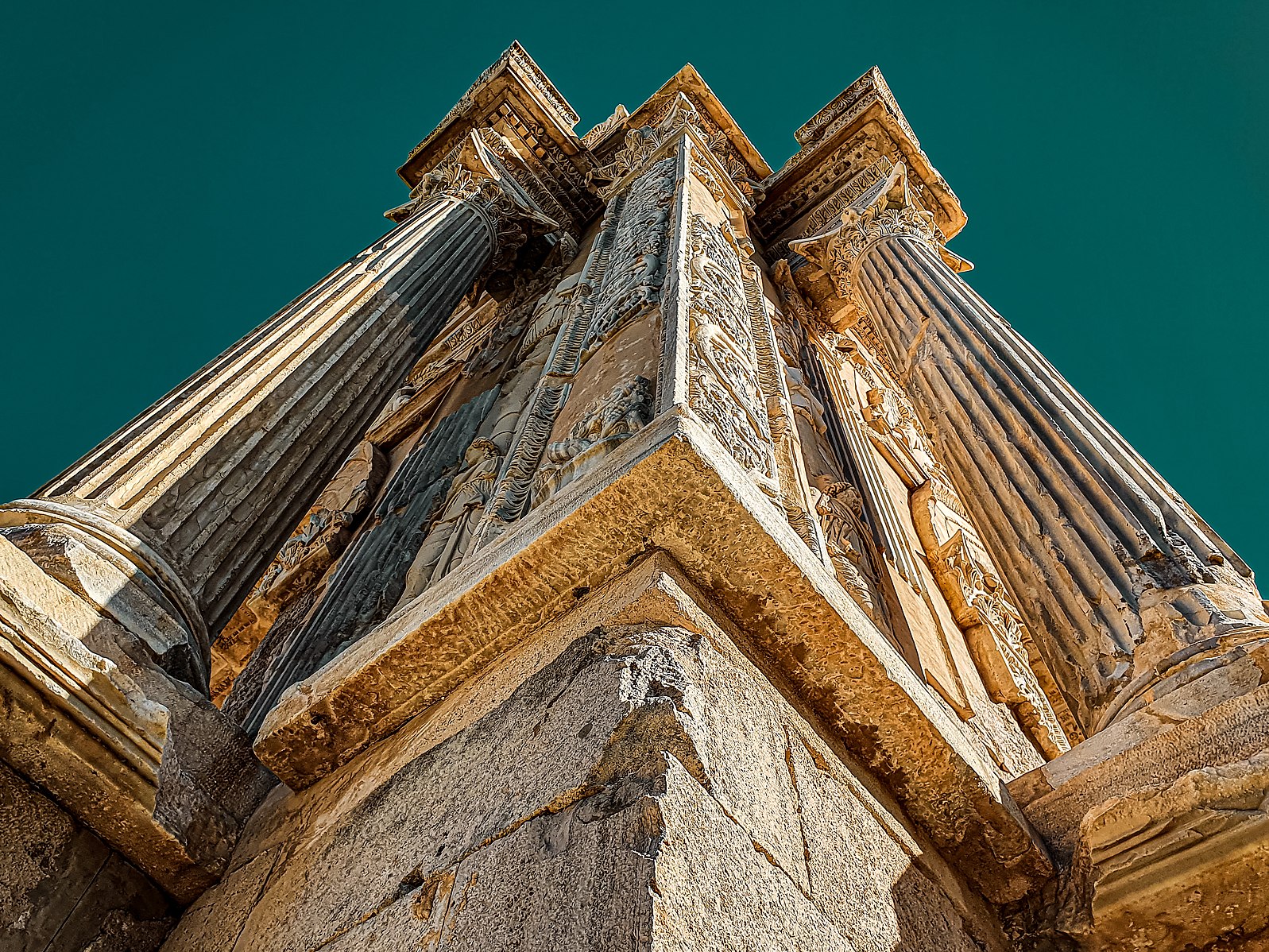“The fate of antiquities in Libya is in fact unknown… Successive governments have neglected this sector while also failing to develop other vital sectors such as health or education.” Ahmed Hussein Younes, head of the Libyan Department of Antiquities in the East, July 10, 2022[1]
PRECIS: Despite clear evidence that government apathy and negligence have caused further destruction of Libya’s ancient and historic heritage, leaving museums closed, inventories in disarray, and all five of its World Heritage sites at risk, the U.S. State Department has renewed a 5-year cultural agreement with Libya. Notice of the renewal of a U.S. Memorandum of Understanding with Libya (Libyan MOU) was announced on February 23, 2023.
For at least a decade, there has not been a stable government in Libya, nor the will among any of the parties fighting for power to protect or preserve its heritage. Regional militias, foreign mercenaries, religious extremists, tribal factions, and the Libyan National Army have all engaged in looting and destruction. Ancient Roman monuments are covered with graffiti and mounds of trash. Goats graze in some sites, others bear the pockmarks and scars of artillery fire, whole sections of historic cities are bombed-out and uninhabitable, and ancient ports are battered by waves and deluged in sewage as illegal development encroaches on their walls.
A State in which ancient sites are collapsing, archives are bulldozed and human and religious rights grossly abused simply cannot meet the U.S. legal criteria for a heritage agreement. The Libyan MOU is a failure. It should never have been signed in the first place, and should never have been renewed.
Meanwhile, the Smithsonian will hold artifacts from Yemen rather than return them under a U.S.-Yemen cultural property agreement. U.S. and Yemeni officials agreed that the safety of the objects could not be assured if they were returned to Yemen, an active war zone. Yet just in 2020, the U.S. State Department signed an MOU asserting that Yemen was protecting its cultural heritage and requiring returning art or artifacts from Yemen to whatever government then controlled it.
The Libyan Renewal Agreement

Leptis Magna in 2004, Labdah, Libya, Author G. Sludge, November 2004, CC-SA 4.0 International license, Wikimedia Commons.
A U.S. law, the Cultural Property Implementation Act (CPIA), provides that the United States can sign and extend indefinitely an agreement with a foreign state that has adopted the 1970 UNESCO Convention if the state meets specific conditions. A Cultural Property Advisory Committee at State is tasked with reviewing requests from foreign nations, determining if the country is doing all it can to halt a serious situation of looting, and if no less drastic means are available, to recommend an import ban on the types and periods of items at risk of serious pillage in a Designated List.
The CPIA was intended to preserve the delicate balance between U.S. interests in supporting the international art market, museums and public access to art against situations where protection is required due to jeopardy from the pillage of archaeological or ethnological material. Congress did not intend for agreements to be signed if requesting countries failed to protect their heritage or for Designated Lists to include sweeping categories of objects. Despite the limitations set by Congress, activists at the State Department have instead crafted and imposed a new model for agreements, where every foreign request is granted, no country is disqualified by inaction or its own deliberate destruction of culture (Afghanistan and the Taliban included), agreements are always renewed (now for more than 30 years), and the Designated Lists include virtually every object made by man since the beginning of time up to the early 20th century.

Gladiator mosaic of a retiarius from Leptis Magna Libya 1st century CE, Public domain, Wikimedia Commons.
The Libyan MOU amounts to a near-complete import blockade. It prohibits import of archaeological objects from the Paleolithic, Neolithic, Punic, Greek, Roman, Byzantine, Islamic and Ottoman periods, dating from12,000 B.C. to 1750 A.D. A second category of blocked “ethnological material” ostensibly represents categories of Ottoman Libyan objects “important to the knowledge of the history of Islamic Ottoman society in Libya from 1551 A.D. through 1911 A.D.” The Designated List of blocked objects includes ancient artifacts such as “Rope—Rope and string were used for a great variety of purposes, including binding, lifting water for irrigation, fishing nets, measuring, and stringing beads for jewelry and garments.”
Ethnological objects classed as “important” on the Designated List include most handmade objects made into the early 20th century: all jewelry and beads used for personal adornment, garments, clay and metal pots and hardware, all conceivable architectural elements of wood or stone and even prayer rugs.

Roman sculptures in Red Castle Museum, Tripoli, 2012., Author Libiya11, 8 June 2012, CCA-SA 3.0 Unported license, Wikimedia Commons.
The 2017-2018 Libyan MOUs were among the first U.S. agreements to adopt Designated Lists of prohibited imports on this absurd scale. They did not distinguish between items of historical or archaeological importance and items that are common, repetitive, and that are found outside of archaeological contexts, such as Ottoman period and earlier Islamic artworks, Tuareg materials, and the artifacts of the now-exiled Jewish communities of Libya.
The 2023 Designated List now excludes “Jewish ceremonial and ritual objects” from the otherwise comprehensive embargo. This represents a partial victory for emigrant Libyan Jewish communities in the U.S. Representatives of Jewish organizations gave eloquent testimony at a State Department hearing in 2022 about how their property was seized and their families brutally driven from Libya in the 20th century. However, the exclusion fails to include lost Jewish personal property and heirlooms remaining in Libya or held by communities in the diaspora, which must be proved to have been outside Libya for at least 10 years in order to enter the U.S.

Haua Fteah Cave looking south into the cave. Author Graeme Barker, 1 January 2014, CCA 3.0 Unported license, Wikimedia Commons.
The original Libyan agreements of 2017-2018 had been pushed through by the State Department without time for congressionally mandated public review and signed with a fragmented Libyan ‘government’ that remains a mere faction in an ongoing civil war. When the original agreement was made, it was obvious that the Libyan government could not uphold the terms requiring it to protect and preserve Libyan heritage, nor meet the criteria for an MOU under U.S. law.
Libya today has no government capable of implementing the U.S. MOU. It was in chaos in 2017 when emergency import restrictions were first put in place and it is still in chaos in 2023.
In renewing the 2018 agreement for an additional 5 years, the State Department has ignored Libya’s continuing failure to protect even its best-known ancient archaeological sites or its historical urban heritage.
Objections raised against the renewal include:
- Libya is still enmeshed in a civil war and has no effective national government.
- Libyan archaeological sites and built heritage are being destroyed, not protected, by the factions fighting in Libya. All five UNESCO World Heritage sites in Libya appear on the list of World Heritage in Danger.[2]
- The Haua Freah Cave has been backfilled to protect the site from war damage.[3] In 2018, British archaeologists reported that the Medina Gadima (Old City) of Benghazi “has been devastated, with parts barely recognizable, being simply a mass of collapsed buildings.”[4] Although 40-50,000 families had been displaced by the fighting, by 2020, no arrangements had been made to repair the structures or provide alternative housing. At Ghadames, “Warfare, neglect and recent very bad weather have had a marked effect on parts of the city. A number of co-dependent buildings have collapsed, jeopardizing the stability of adjacent properties.”[5]
- Much of Libya’s heritage loss is due to illegal land development tolerated by local governments, not to an international market for looted Libyan artifacts. During the last MOU, escalating illegal development for housing and agricultural land in and around Shahat and even within the World Heritage Site of Cyrene destroyed significant parts of the ancient Necropolis. A new housing estate constructed 2017-2018 has destroyed the East Fort, a rock cut fortress at Apollonia, and the ancient port is now surrounded by housing and with sewage discharged into the sea, in some cases at the ancient port itself.
- Libya is an abuser of human, social, religious, and community rights – not a valid partner with the United States in the protection of global cultural interests that the U.S. avows.
- Libya continues to nationalize or destroy the remaining community and private property of Libyan Christians and Jews.
- The Libyan request calls for return, but government authorities cannot protect returned items.
- The global public has no access to Libyan museums even when they are open; it is unsafe to travel within Libya and there is no foreign tourism.
- Libya needs funding for inventories and documentation, salaries for heritage workers, disaster prevention for sites, museums, and archives, and a public campaign to educate its public, especially young people, on the importance of history and preservation of heritage – not a renewed MOU.

Dar El Bishi Synagogue, Tripoli, Libya, Before.
When the Libyan agreement was first proposed in 2017, the Association of Art Museum Directors (AAMD) stated that there was clearly no emergency; Libya had admitted the “threats” to its cultural heritage had existed for “at least the last six years and in some instances for decades.” Moreover, asking for import restrictions on virtually every item made over a 13,000 year period from 12,000 BC to 1750 AD was “nothing short of vast” and “granting it would strain, if not shatter credulity.” It reminded the Cultural Property Advisory Committee reviewing the request at the State Department that archaeological materials must be of “cultural significance and that ethnological material must have “distinctive characteristics,” be of “comparative rarity” or contribute “to the knowledge of the origins, development, or history.” The scope of the Libyan request, stated the AAMD, “eradicates any notion of protecting only “culturally significant” items” as required under U.S. law.[6]

Dar El Bishi Synagogue, Tripoli, Libya, 2022.
In 2022, the AAMD again did not support a Libyan MOU. It analyzed Libya’s performance under the 2017-2018 MOUs, finding that, “Until the Libyan government is capable of functioning independently, Libya’s ability to protect its cultural patrimony remains in serious doubt. These doubts are supported by recent evidence of destruction in Libya that continues with apparent impunity.”[7]
The 2023 Libyan MOU again lists an extensive range of coins, including Greek bronze, silver, and gold coins, Roman bronze and silver “struck at Roman and Roman provincial mints,” Byzantine coins struck in Constantinople and elsewhere not in Libya, and later Islamic and Ottoman coinage, likewise struck outside of Libya. Here again, compliance with the US. law’s requirement that only coins actually “first discovered” in Libya can be included is glossed over.

Christian cathedral, Tripoli. Courtesy JIMENA.
A lengthy report by ASOR[8] (the American Society of Overseas Research) cited by a number of commentators from the U.S. archaeological community in effect argued for renewal of the Libya MOU, stating in a few situations how the Tripoli government (one of three or four governments now operating in Libya) had taken steps to safeguard antiquities as a result of the 2017-2018 U.S.-Libya agreements, but on closer reading, the report shows the limited reach of the Tripoli authorities, the serious lack of funding, and deterioration rather than actual improvement. For example, the ASOR report noted that only fourteen cases for violations of Libya’s antiquities laws were opened between 2013-2020 and none were actually prosecuted. [9] It should be noted that ASOR is a State Department contractor and has received millions of dollars from the State Department, including a grant of $800,000 to fund the Libyan report.

Former Tripoli, Libya Cathedral converted to Mosque. Courtesy JIMENA.
The 2023 renewal of the Libyan agreement represents yet another instance of the Department of State not adhering to the legal requirements of the Cultural Property Implementation Act. Government indifference, negligence, and lack of funding have left Libyan heritage authorities unable to even begin to take the self-help measures required for a bilateral agreement under the CPIA.
Libya is a failed state engaged in continuing violations of international law. A state that permits slavery, ignores rape and other egregious crimes against helpless immigrants seeking refuge, that routinely bombs its own cities, destroys universities and their libraries and archives and that has grossly neglected its own World Heritage Sites simply cannot meet the U.S. legal criteria for a heritage agreement. Nor can Libya guarantee the safety and security of objects that will be returned to it under an MOU.
Additional Reading: Full commentary on the proposed Libyan renewal appeared in “Will US Renew Libyan Embargo During Civil War?” on July 8, 2022 in Cultural Property News.)
Yemen: Another State in a Civil War Cannot Protect its Own Property

Stone head officially returned to Yemen, held by Smithsonian. Photo Homeland Security Investigations.
The Smithsonian Museum announced on February 21, 2023 that for the next two years, it would be displaying Yemeni artifacts seized in 2012 from a NY dealer who improperly imported them. The Smithsonian agreed to temporarily hold the objects because there was no safe space in Yemen to return them to. This is the first official return of artifacts to Yemen in twenty years. The arrangement for display at the Smithsonian was made through an agreement between U.S. Immigration and Customs, the State Department, the Embassy of Yemen and the Smithsonian. The artifacts included 64 relief carved stone heads, a bronze inscribed bowl, a stone funerary stele from around the 1st century BCE, and eleven pages from an 8th century Quran.
The arrangement was made because the Yemeni Embassy agreed that the safety of the objects could not be assured if they were returned to Yemen, an active war zone. Yet just in 2020, the U.S. State Department signed a cultural property agreement that required returning any art or artifacts from Yemen to be returned to whatever government then controlled it.

Images of Dhamar Museum before and after hit by Saudi aircraft. February 13, 2018.
Neither U.S. law – nor common sense – justifies the return of objects to Yemen at this time. The CPIA does not allow cultural objects to be seized at U.S. borders in order to deliver them to a government which is at least partly responsible for the intentional destruction of cultural patrimony. Yet this is exactly the procedure that has been authorized and supported by the State Department.
It’s not known if any Yemeni objects have been seized as a result of the cultural property agreement signed between Yemen and the U.S. in 2020. If there are any seizures in the future, they will likely need to be held in a similar form of protective custodial arrangement.
The MOU with Yemen is another example of a poorly crafted U.S. cultural policy that not only grants cultural authority to States actively engaged in heritage destruction, but also results in the deprivation of minorities cultural heritage. When Yemen requested for a cultural property agreement in 2019, the Jewish diaspora organization JIMENA responded as follows:
“The Cultural Property Advisory Committee at the U.S. Department of State has been signing Memorandums of Understanding (MOU) agreements with foreign governments that blockade the entry of cultural property to the USA and deny Jews and Christians from Arab countries the rights to their historic heritage.”
“Through the MOU process, our government is transferring ownership of confiscated Jewish property to various Arab governments that expelled or forced their Jewish populations to flee antisemitic persecution under duress. Despite the protestations of Jewish communal organizations, including ADL: The Anti-Defamation League, Conference of Presidents of Major Jewish Organizations, B’nai Brith International, Simon Wiesenthal Center, World Jewish Congress of North America, and many others, MOU agreements have been signed with Algeria, Libya, Egypt and Syria.”

Hebrew Bible: (Pentateuch: Shemot-Devarim) Yemen: Early Fifteenth Century. David Solomon Sassoon, then Valmadonna Trust Library, MS 7. Sotheby’s, December 2015.
Cultural agreements have been signed between the U.S. and numerous Arab governments over the past five years, under a flawed policy that prioritizes national ownership over human rights to religion and to personal and community property. These recent agreements with Middle Eastern and North African countries are based on a flawed premise – that Jewish and Christian cultural property constitutes the national heritage of Arab countries. In fact, both Jewish and Christian cultural property in Arab countries was expropriated from private homes, schools, churches and synagogues.
Legitimate efforts to curb looting are essential, but they must be targeted to preserve archaeological resources, and not to provide a legal vehicle to legitimize foreign confiscations and wrongful ownership claims.
The need to safeguard Yemeni cultural heritage in the Smithsonian because it is not safe for it to be in Yemen is clear proof that the Memorandum of Understanding between the U.S. and Yemen was based on false premises, not facts.
Additional Reading:

Jewish Minorities in the Middle East, Art and Heritage Law Report, 55 pages, by Katherine Brennan and Kate Fitz Gibbon.
The pervasive pattern of abuse of both human and property rights of religious and ethnic minorities in the Middle East raises serious questions about the protection of minority interests within the nationalist framework of cultural policy today. This report examines the inability – or unwillingness – of state actors to protect cultural interests of religious and ethnic minorities
Mwatana for Human Rights: Destruction of Yemen’s History, Cultural Property News, November 26, 2018, and CCP & GHA Testimony on Yemen’s Request for Cultural Property Restrictions, Cultural Property News, October 29, 2019.
[1] Sghaier Hidri, Libyan antiquities at risk from political instability, conflict, AL-MONITOR (July 10, 2022), https://www.al-monitor.com/originals/2022/07/libyan-antiquities-risk-political-instability-conflict#ixzz7uFGcmnH1.
[2] List of World Heritage in Danger, UNESCO, https://whc.unesco.org/en/danger/
[3] Paul Bennet, Notes from Libya, Libyan Studies 47 (2016), pp 181–184 © The Society for Libyan Studies, doi:10.1017/lis.2016.12 First published online 14 September 2016, https://doi.org/10.1017/lis.2016.12 Published online by Cambridge University Press.
[4] Paul Bennett, Notes from Libya, Libyan Studies 49 (2018), p 221, © The Society for Libyan Studies
[5] Id. at 89.
[6] Statement of the Association of Art Museum Directors Concerning the Request from the Government of Libya to the Government of the United States of America under Article 9 of the 1970 UNESCO Convention on the Means of Prohibiting and Preventing the Illicit Import, Export and Transfer of Ownership of Cultural Property, Association of Art Museum Directors, July 19, 2017, 1.
[7] Statement of the Association of Art Museum Directors Concerning the Proposal to Extend the Memorandum of Understanding between the Government of the United States of America and the Government of Libya Concerning the Imposition of Import Restrictions on Categories of Archaeological and Ethnological Material of Libya, Association of Art Museum Directors, July 6, 2022, 1.
[8] The State of Illicit Trade and Looting of Libyan Antiquities, 2011–2020, AM. SOC’Y OVERSEAS RESEARCH (Dec. 31, 2020), https://www.asor.org/wp-content/uploads/2021/03/CHI-Report_Libya-IllicitTrafficking_Full_Compressed_2021-03-25.pdf.
[9] Id. at 9.
 "Gold and rubies of Libya," 10 December 2020, Author Haitham Alkilani, CCA-SA 4.0 International license.
"Gold and rubies of Libya," 10 December 2020, Author Haitham Alkilani, CCA-SA 4.0 International license. 

